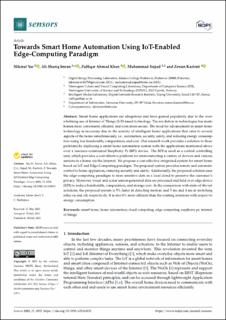| dc.description.abstract | Smart home applications are ubiquitous and have gained popularity due to the overwhelming use of Internet of Things (IoT)-based technology. The revolution in technologies has made homes more convenient, efficient, and even more secure. The need for advancement in smart home technology is necessary due to the scarcity of intelligent home applications that cater to several aspects of the home simultaneously, i.e., automation, security, safety, and reducing energy consumption using less bandwidth, computation, and cost. Our research work provides a solution to these problems by deploying a smart home automation system with the applications mentioned above over a resource-constrained Raspberry Pi (RPI) device. The RPI is used as a central controlling unit, which provides a cost-effective platform for interconnecting a variety of devices and various sensors in a home via the Internet. We propose a cost-effective integrated system for smart home based on IoT and Edge-Computing paradigm. The proposed system provides remote and automatic control to home appliances, ensuring security and safety. Additionally, the proposed solution uses the edge-computing paradigm to store sensitive data in a local cloud to preserve the customer’s privacy. Moreover, visual and scalar sensor-generated data are processed and held over edge device (RPI) to reduce bandwidth, computation, and storage cost. In the comparison with state-of-the-art solutions, the proposed system is 5% faster in detecting motion, and 5 ms and 4 ms in switching relay on and off, respectively. It is also 6% more efficient than the existing solutions with respect to energy consumption. | en_US |

